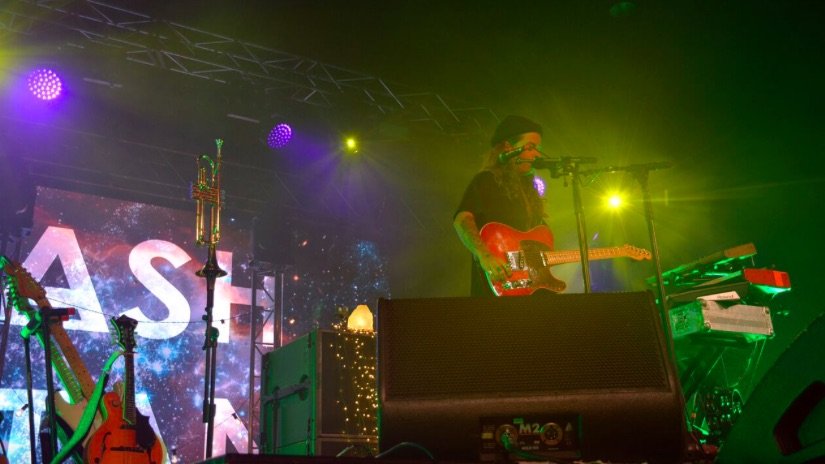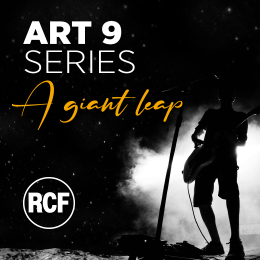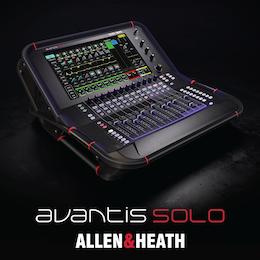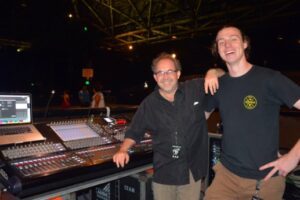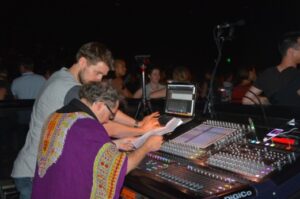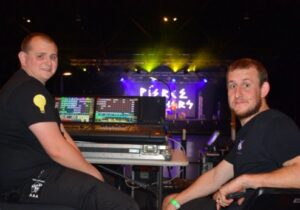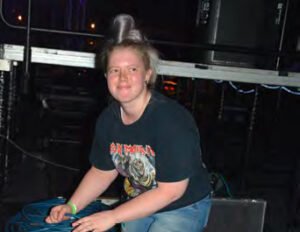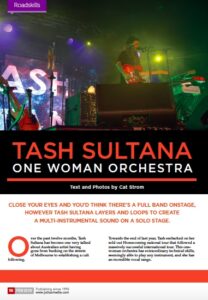Subscribe to CX E-News
Roadskills
Tash Sultana – One Woman Orchestra
Text and Photos by Cat Strom.
Close your eyes and you’d think there’s a full band onstage, however Tash Sultana layers and loops to create a multi-instrumental sound on a solo stage.
Over the past twelve months, Tash Sultana has become one very talked about Australian artist having gone from busking on the streets of Melbourne to establishing a cult following.
 Towards the end of last year, Tash embarked on her sold out Homecoming national tour that followed a massively successful international tour. This one-woman orchestra has extraordinary technical skills, seemingly able to play any instrument, and she has an incredible vocal range.
Towards the end of last year, Tash embarked on her sold out Homecoming national tour that followed a massively successful international tour. This one-woman orchestra has extraordinary technical skills, seemingly able to play any instrument, and she has an incredible vocal range.
The show is a little chaotic as Tash never plays the same set list and the crew never know what is coming.
“It’s half busked and half programmed,” said Alex Hughes, lighting designer. “Once we’ve worked out what the song is, we just go from there and follow what she’s doing onstage!”
Alex is fairly new to the camp, arriving in time for the Australian tour. His brief was to make Tash the centre piece, ensuring the lighting took a backseat and did not dominate.
Normally Alex has a circle truss and upright trusses with lights that focus in on Tash but the circle could not be rigged at the Hordern Pavilion and so Alex had to rely on only the upright truss towers.
“I’m trying to essentially focus every single light on her, playing with angles and shadows and not too much front light,” explained Alex. “I’ve put Martin MAC Vipers on the 2.5 and 3 metre uprights with more Vipers on the floor.
“I really like using MAC Vipers due to their output and colour reproduction. I have the Claypaky A.leda B-EYE K20 to do the side lighting and add ambience, they have a great zoom range.”
Also in the rig were three SGM X5 strobes, used sparingly, and there were no followspots as it was all done off the moving lights. EI Productions supplied the lighting.”
Media was controlled by a PRG Mbox v4, nothing custom just normal loops with a couple of effects overtop. Tash selected the content to which Alex carefully matched the lighting.
Many of you will know FOH engineer Ed Gamble as the Production Manager for Melbourne’s Corner Hotel where he resided for nearly ten years, and it was there that he first met Tash. It didn’t take him long to realise that this was one special act.
“They needed someone to run FOH, which I did, and she then asked me if I’d do a couple of Worker’s Club gigs for her,” said Ed. “There were people queuing around the corner to get in and from then on, the shows have continually stepped up and since then have always been full houses.”
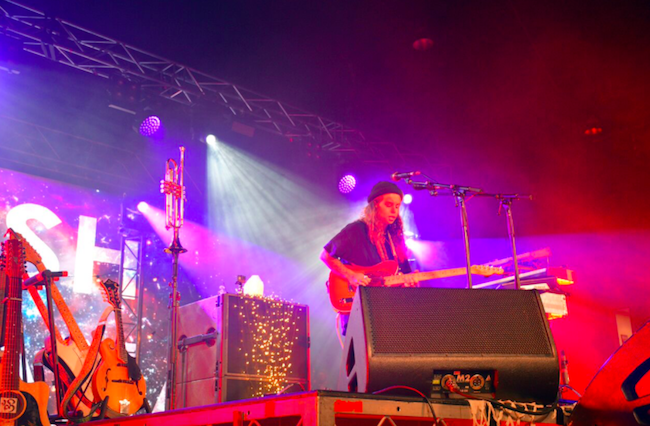
When Tash started to tour extensively, she didn’t bring Ed but promised that once she could afford it, she would take him with her. “It’s been a real privilege to watch her create something and watch it fly,” he remarked.
It’s a simple gig in that there are only 12 channels but there’s a lot more to it than that. Tash uses a loop pedal, changing the inputs to the loop pedal when required so by definition she’s doing a lot of her own mixing and production. Everything that happens onstage, Tash sends down to a Roland Looper Pedal which has two dual mono loops allowing her to layer a number of tracks down those two channels and send them back to control.
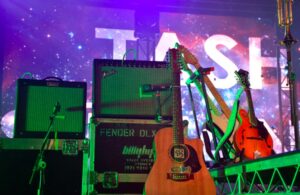 All of the rhythmic elements come down one channel and all the melodic/harmonic elements of her performance down the other. Any mixing that goes on within those categories, happens onstage. In fact the bulk of the mixing of the show happens onstage, and for Ed and monitor engineer Jordan Tanner, it’s more about redirecting her mix.
All of the rhythmic elements come down one channel and all the melodic/harmonic elements of her performance down the other. Any mixing that goes on within those categories, happens onstage. In fact the bulk of the mixing of the show happens onstage, and for Ed and monitor engineer Jordan Tanner, it’s more about redirecting her mix.
“It has its pros and cons – in some ways I lose a bit of flexibility but then again I enjoy not having to manage a whole 40 channels,” added Ed.
“Really quickly in the set I can get to the point where the channels are doing their own thing and I’ve got a feel now for having done so many shows, as to where things go for different parts of the set.
“I pretty quickly enjoy changing my mindset to what the air is doing in the room, and tweak things in that direction as much as managing the balance of a bunch of channels. I really enjoy that intensity and focus when I’m mixing for Tash.”
Ed was operating a DiGiCo SD10, saying he loves the work flow on the console and the fact that he doesn’t have to change pages.
“Tash has 12 input channels, then I double some stuff up and do my own FOH effects which gives me lots of flexibility right under my hands,” commented Ed.
“People sometimes ask me how much of her show is pre-recorded but it’s not, to me she’s still got a lot of busker at heart and it’s still very impressive how she can adapt to different situations, improvise and handle different crowds.”
DiGiCo effects favoured by Ed included a 1.6 second hall reverb and vocal plate reverb with plenty of pre-delay, fairly old school keeping the channels plain and boring. On the left/right out Ed favours multi- band compression to bring everything together so it’s a bit like making an old record but live.
“Once I’m happy with the balance of the channels a lot of the mixing can just happen on the multiband compression,” said Ed.
“Because Tash is really producing her own stuff live, she’s really refined which microphones to use as she’s a bit of a gear hound. She uses either an AKG D7 or Shure KSM8 depending on the space, both of which I really enjoy, particularly the top end. I can feel that I can let the top end out more with these than with other microphones.”
Ed never tells Tash how she should do things acoustically, preferring to support her to do her own thing and dealing with the result FOH. It was a conscious decision he made early on to let her keep producing her own sound.
Jordan Tanner is a busy man, he is both tour and production manager as well as Tash’s monitor engineer.
“It’s full on but it’s pretty much a team effort when it comes to the tour management,” he said. “The travel logistics and accommodation is handled by myself and management, so the production management takes up more of my time for this tour. Moving into 2018, we’ll distribute the load more.”
Jordan also ran a DiGiCo SD10 at monitors describing DiGiCo as the king of consoles citing its’ flexibility and its’ capability so far as routing.
“Doing monitors for Tash is a challenging gig as you have to squeeze every last drop of gain before feedback out of your wedges,” remarked Jordan.
“DiGiCo allows me to route my signals in a way that I can process them accordingly. Tash has fairly high expectations for her stage sound so it’s about me being able to deliver that faster. It is processing overkill when we’ve only got twelve channels coming off the stage but it’s more about flexibility as far as workflow is concerned.”
Typically, soundcheck is scheduled for two hours with the first 45 minutes spent fine tuning Tash’s stage sound and the rest is a jam session allowing Tash to acclimatize to the stage.
During the set Jordan has to be very attentive to Tash as she often needs changes to her monitor sound although he has worked with her so long, he can often anticipate any required action.
“For the most part it’s maintaining a stable monitor sound and taming any feedback that may rear its’ head during the set,” he said.
“There’s some minor cue stuff such as when she sits down to play a twelve-string at the end of the set and there are a bunch of level readjustments that happen at that point.”
- Ed Gamble and Jordan Tanner
- Mumu Mixing. Brad Law (JPJ) at left
- Alex Hughes and Bryce Mace
- Lara Smith JPJ
Tash uses only wedges although there was a Shure PSM1000 unit doing two stereo mixes for the stage tech and the guitar tech. On stage were four d&b M2 wedges for Tash and a pair of L-Acoustic SP18’s behind her as she has a fairly hefty LF requirement.
Ideally they would have preferred d&b M4 or L-Acoustics X15 wedges. “It’s just an output thing, obviously M2’s are super loud but we prefer the M4 because it has got so much more coherence through the high-mids which is where her vocal clarity and intelligibility is,” stated Jordan.
Jordan reports he will be experimenting with Tash the use of IEMs in pre-production rehearsals in 2018.
“It’s my hope that we can transition to exclusively IEMs but whatever we ended up with has to be comfortable for Tash,” he added.
JPJ Audio provided the control package with in-house PA systems used.
This article first appeared in the print edition of CX Magazine February 2018, pp.58-62. CX Magazine is Australia and New Zealand’s only publication dedicated to entertainment technology news and issues. Read all editions for free or search our archive www.cxnetwork.com.au
All text and photos © CX Media
Read more Roadskills from February’s CX Magazine:
Cher
alt-J
Muse
Subscribe
Published monthly since 1991, our famous AV industry magazine is free for download or pay for print. Subscribers also receive CX News, our free weekly email with the latest industry news and jobs.


